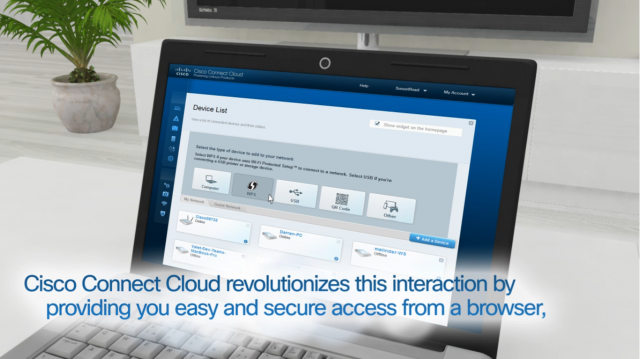
We told you earlier today about how Cisco is pushing a cloud-based WiFi router management service onto customers of certain Linksys devices—and that to use the service customers must agree to a list of anti-porn and anti-piracy clauses.
The trouble is that for customers with automatic firmware updates turned on, the traditional (and very useful) router management tools available in a Web browser at the address 192.168.1.1 became completely unavailable. Instead, you had to sign up for Cisco’s cloud service, roll back your firmware, or just forget about using advanced router management features.
Cisco has backpedaled tonight, with a blog post saying the service—Cisco Connect Cloud—will no longer be the default management tool. "In response to our customers’ concerns, we have simplified the process for opting-out of the Cisco Connect Cloud service and have changed the default setting back to traditional router set-up and management," Cisco home network VP Brett Wingo wrote.
The company also said it "will not arbitrarily disconnect customers from the Cisco Connect Cloud service based on how they are using the Internet," and that the "Cisco Connect Cloud service has never monitored customers’ Internet usage, nor was it designed to do so, and we will clarify this in an update to the terms of service."
The bottom line is router administrators should be able to turn automatic updating back on without having to worry about losing router administration features. We’d still keep a close eye on it, though, because the blog post leaves some room for doubt.
The part that is slightly iffy says, "If a customer chooses not to set up a Cisco Connect Cloud account, they can manage their router with the current local management software. We are committed to providing both Cloud-enabled and local management software."
That all sounds well and good, but Cisco’s local management tools include an extremely limited piece of software distributed on a disc that comes with routers. Last night, clicking "advanced" features on that software redirected me to 192.168.1.1, which in turn automatically redirected me to Cisco’s cloud.
The Cisco blog doesn’t specify which local management software customers will be able to use going forward. Moreover, instead of updating the firmware again to strip out the Connect Cloud requirement, Cisco is still recommending that customers roll their firmware back to the previous version if they want all the local management tools. So it's not totally clear to us that customers can get future firmware updates and still maintain access to the local, browser-based management console.
I own one of the routers in question—the Linksys EA3500. I rolled my firmware back last night, and turned off automatic updating. Upon reading Cisco’s blog post tonight I assumed at first that I could update to the latest firmware and then verify that the browser-based management console is still active.
But the management console tells me my router software is already up to date. The firmware update that forced Connect Cloud onto customers is still available on Cisco’s download site, so while it still exists, it seems to have been pulled from the automatic update cycle. Even a manual check for updates doesn’t reveal the Connect Cloud update—you have to go to the site to find it.
That seems to indicate that Cisco truly intends to make Connect Cloud an opt-in rather than an opt-out service. But since Cisco’s blog didn’t specifically promise access to the browser-based management console after future automatic updates, we’ve asked the company for clarification and will update this post if we get an answer.
UPDATE: Cisco has told us that going forward the automatic update process will accomodate people who prefer the local, browser-based management console over the cloud service. That's good news, as customers who don't want to use Connect Cloud won't have to choose between their current management setup and firmware updates that could be important.
"If a customer chooses to use the Embedded Web UI and selects the Auto-Update feature, Cisco will offer them an update," Cisco said. "Currently the only update we have is for the Cisco Connect Cloud feature set, but in future, we plan to provide updates for the embedded Web UI feature set specifically. The core message is that a customer can/will be able to choose an embedded web UI and Update without having to use CCC.”
reader comments
91